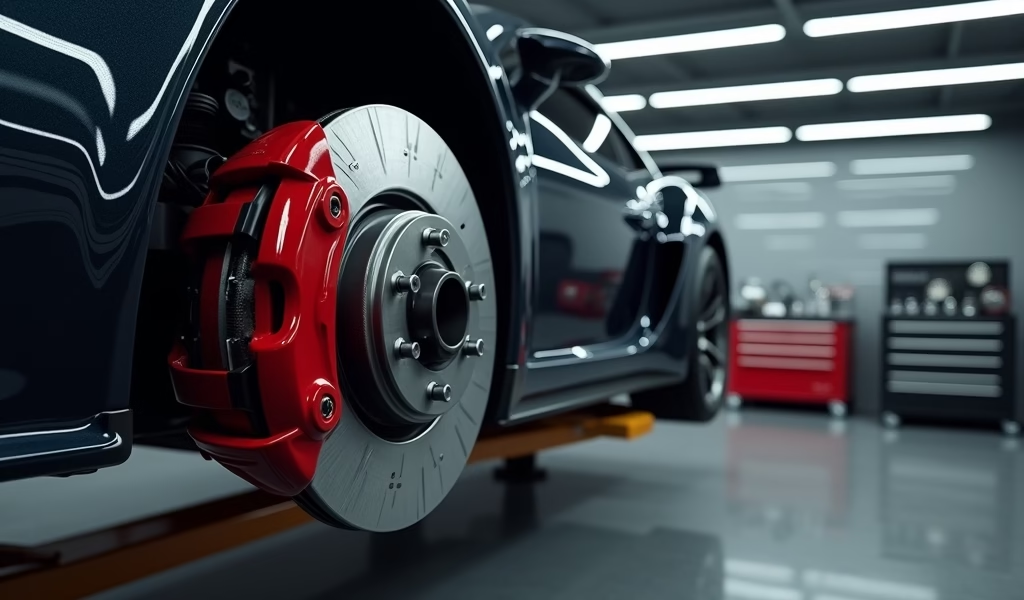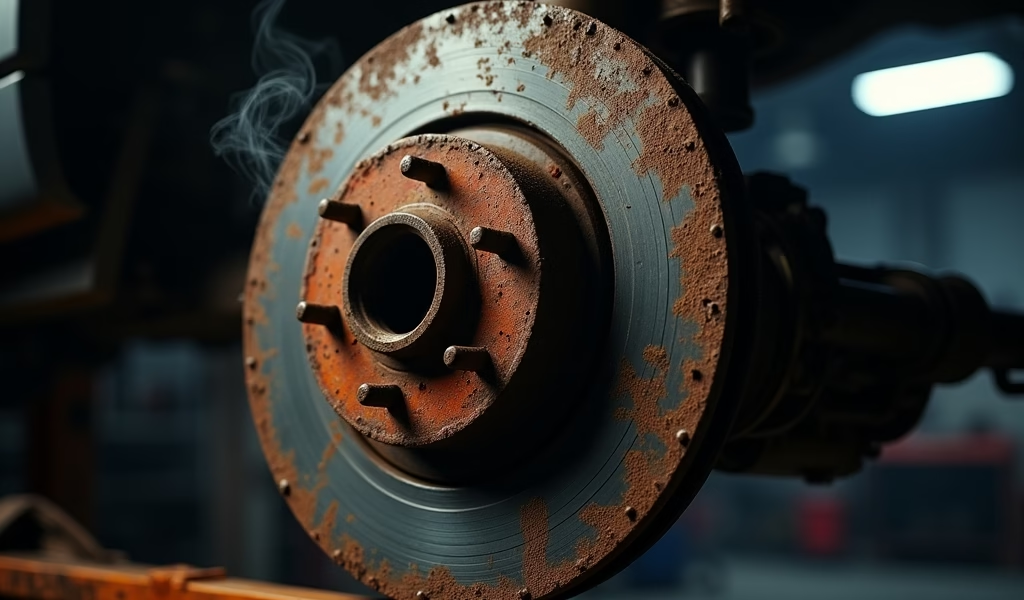Overview
This article provides five practical strategies to reduce brake replacement costs, including DIY installation, comparison shopping, preventative maintenance, service bundling, and proper timing, with typical costs ranging from $500-1,200 for most vehicles. The author emphasizes balancing cost-saving measures with safety concerns, noting that while saving money is important, quality brake components are essential for vehicle safety and should not be compromised.
Table of Contents
- Understanding Brake and Rotor Costs
- Factors That Affect Brake and Rotor Costs
- DIY Brake and Rotor Replacement: Save on Labor Costs
- Shopping Around: Finding the Best Deals on Quality Parts
- Preventative Maintenance: Extend Your Brake Life
- Bundle Your Brake Services for Better Value
- Timing Matters: When to Replace for Maximum Value
- Conclusion: Balancing Cost and Safety
- Frequently Asked Questions
Understanding Brake and Rotor Costs
When it comes to brakes and rotors cost, I’ve seen customers experience everything from mild surprise to complete shock. As a mechanic with 15 years in the field, I can tell you that brake work isn’t cheap—but it doesn’t have to break the bank either. The typical cost for replacing both brake pads and rotors on all four wheels runs between $500 and $1,200 for most vehicles, though luxury cars can easily push that to $2,000+.
The reason for this wide price range? Several factors come into play: your vehicle make and model, parts quality, labor rates in your area, and whether you’re replacing just the front, just the rear, or all four corners. Your complete brake replacement cost will also depend on whether additional components need attention.
Let’s be clear—skimping on brake work isn’t something I’d ever recommend. Your brakes are literally what stands between you and a potential accident. But that doesn’t mean there aren’t legitimate ways to save money without compromising safety. In this article, I’ll walk you through five proven strategies that can help reduce your brake service costs while maintaining the stopping power you need.
Factors That Affect Brake and Rotor Costs
Before diving into savings strategies, it helps to understand what you’re actually paying for. The brakes and rotors cost isn’t arbitrary—it reflects several key factors:
- Vehicle type and size: A Honda Civic will cost less than a BMW 7 Series or a one-ton pickup
- Part quality: OEM (Original Equipment Manufacturer) parts versus aftermarket options
- Labor rates: These vary widely by region and shop type (dealership vs. independent)
- Additional components: Calipers, brake lines, and hardware kits add to the total
- Shop overhead: Facility costs, equipment, insurance, and other business expenses
On average, quality brake pads alone will run $50-150 per axle, while rotors typically cost $50-125 each for standard vehicles. Premium or performance options can easily double these figures. Labor adds another $150-300 per axle at most shops.
I’ve worked on everything from economy cars to luxury SUVs, and I can tell you that materials matter enormously. Ceramic pads cost more than semi-metallic, which cost more than organic. Similarly, coated rotors command higher prices than basic ones but often last longer and perform better in challenging conditions, as research from SAE International has demonstrated.

DIY Brake and Rotor Replacement: Save on Labor Costs
I’ll be straight with you—labor typically makes up 30-40% of your total brake job cost. If you’re reasonably handy and have access to basic tools, replacing your own brake pads and rotors is one of the most achievable DIY auto repairs. I’ve guided countless friends through this process, and most are surprised by how manageable it is.
To tackle this job yourself, you’ll need:
- Jack and jack stands (never work under a car supported only by a jack!)
- Lug wrench
- C-clamp or caliper piston tool
- Socket set and wrenches
- Brake fluid
- Brake cleaner spray
- Anti-seize lubricant
The basic process involves safely lifting and securing the vehicle, removing the wheel, unbolting the caliper, removing the old pads and rotors, and installing the new components. Just be aware that modern vehicles with electronic parking brakes may require a scan tool to retract the calipers.
If you’re considering DIY for the first time, I strongly recommend watching several detailed videos specific to your vehicle model before starting. The brake pad replacement cost savings can be substantial—typically $150-300 per axle—but only if you do the job correctly.
Remember, proper torque specifications are critical for lug nuts and caliper brackets. Too loose, and components can fail; too tight, and you risk warping rotors or stripping threads. When in doubt, consult your vehicle’s service manual or a reputable online resource like Car Care Kiosk for model-specific guidance.
Shopping Around: Finding the Best Deals on Quality Parts
Not interested in DIY? No problem. You can still save significantly on brakes and rotors cost by shopping smartly for parts and service. I’ve seen too many customers accept the first quote they get without realizing they might be overpaying by hundreds of dollars.
Start by getting at least three estimates from different types of repair facilities:
- Dealerships (typically highest prices but manufacturer-specific expertise)
- Independent repair shops (often 20-40% less than dealers with comparable quality)
- Brake specialists (competitive pricing due to volume and specialization)
- National chains (frequently offer promotions and lifetime warranties)
When comparing quotes, make sure you’re looking at equivalent services. A complete brake job should include new pads, hardware (clips, shims, etc.), rotor replacement or resurfacing, and a thorough system inspection.
For parts, you have several options beyond the shop’s default offerings:
- Ask about “good, better, best” options most shops can provide
- Request OEM parts if you prefer manufacturer components
- Inquire about quality aftermarket brands like Raybestos, Akebono, or Brembo
- Consider supplying your own parts (though many shops charge extra labor or won’t warranty these)
Don’t shy away from negotiating, especially at independent shops. If you’ve received a lower quote elsewhere for the same work, many places will match or come close to competitors’ pricing. I’ve authorized countless price matches when customers presented competitive quotes from reputable shops.
Online parts retailers often offer significant savings, but be cautious about ultra-cheap options. In my experience, bargain-basement brake components frequently lead to premature wear, noise issues, and reduced stopping power. Your brake repair might seem cheap initially, but can cost more in the long run if you have to redo the work prematurely.
Preventative Maintenance: Extend Your Brake Life
The cheapest brake job is the one you don’t need yet. Through proper maintenance, I’ve helped customers double the lifespan of their brake components. This doesn’t require exotic techniques—just some basic habits and periodic attention.
First, adjust your driving style. Aggressive braking from high speeds dramatically accelerates wear. Instead:
- Practice smooth, progressive braking
- Anticipate stops to reduce hard braking
- Leave more space between vehicles
- Use engine braking on downhills (shifting to lower gears)
Second, perform regular brake inspections. I recommend checking your brakes during every tire rotation (roughly every 6,000-8,000 miles). Look for:
- Pad thickness (replace when less than 3-4mm remains)
- Rotor condition (scoring, rust ridges, or discoloration)
- Caliper movement and seal condition
- Brake fluid level and clarity
Brake fluid absorbs moisture over time, which can corrode internal components and reduce braking effectiveness. According to NHTSA guidelines, you should change your brake fluid every 2-3 years regardless of mileage.
Additionally, if you notice even minor squealing or grinding, don’t wait—have it checked immediately. Early intervention often means resurfacing rotors rather than replacing them, potentially saving $100-300.

Bundle Your Brake Services for Better Value
One strategy I often recommend to my regular customers is bundling brake work with other necessary maintenance. Many shops offer discounted labor rates when performing multiple services simultaneously. This makes perfect sense from a business perspective—the vehicle’s already in the bay, hoisted up, and partially disassembled.
Smart service combinations that can reduce your brakes and rotors cost include:
- Brake replacement with tire rotation/replacement
- Brake work during major service intervals (30K, 60K, 90K)
- Combining front and rear brake jobs (even if rears have more life)
- Adding brake fluid flush when replacing components
I’ve seen discounts of 10-20% on labor when customers bundle services this way. Some shops even offer package deals that include multiple maintenance items at a set price—often substantially less than à la carte services.
Many national chains and some independent shops also offer brake service specials during slower seasons (typically late winter and mid-summer). These promotions can trim 15-25% off standard pricing, especially if you’re flexible with scheduling.
Don’t forget to ask about warranty options. Some shops offer lifetime warranties on brake pads for a small additional fee. If you plan to keep your vehicle for several years, this can represent significant savings over time, potentially covering 2-3 additional brake pad replacements.
Timing Matters: When to Replace for Maximum Value
Knowing when to replace your brakes can dramatically impact your overall costs. Wait too long, and you’ll damage rotors and possibly calipers; jump the gun, and you’ll waste usable pad life.
The ideal replacement window for brake pads is when they have about 3-4mm of friction material remaining. At this point, you’ve maximized their useful life without risking damage to other components. Most modern vehicles have wear indicators that create a squealing sound when pads reach this point.
For rotors, thickness is the critical measurement. Every rotor has a minimum thickness specification stamped somewhere on the hat or edge. When a rotor approaches this minimum (usually after 2-3 pad replacements), it’s time for replacement. Having rotors measured during routine brake inspections can help you plan for this expense.
I always tell customers to budget for brake work before they actually need it. This gives you time to:
- Research and compare prices without emergency pressure
- Schedule service during promotional periods
- Potentially order parts ahead of time at better prices
- Plan DIY work when weather and time permit
If you’re selling or trading in your vehicle soon, consider the timing carefully. Fresh brakes rarely increase resale value by the amount you’ll spend on them. In these cases, as long as the brakes are safe but worn, you might be better off adjusting your asking price slightly rather than replacing them.
Conclusion: Balancing Cost and Safety
After 15 years of working on brakes, I’ve developed a healthy respect for both quality components and budget constraints. The brakes and rotors cost doesn’t have to be a financial emergency if you plan ahead and make informed decisions. By implementing the five strategies we’ve discussed—DIY installation, comparison shopping, preventative maintenance, service bundling, and proper timing—you can potentially save 30-50% on brake service over your vehicle’s lifetime.
Remember that while saving money is important, compromising on brake quality is never worth the risk. Your vehicle’s stopping power directly impacts your safety and that of everyone around you. Aim for the sweet spot of reasonable cost reduction while maintaining proper performance.
I’ve seen customers successfully balance these priorities by choosing mid-grade components installed by reputable shops, or by using premium components installed themselves. Both approaches can yield safe, effective braking at a reasonable price point.
The most important thing is to stay ahead of brake wear through regular inspections and address issues promptly before they escalate into more expensive repairs. With proper care, modern brake systems can provide tens of thousands of miles of reliable service, keeping both you and your wallet happy.
Frequently Asked Questions
How much should a complete brake job cost?
A complete brake job (pads and rotors on all four wheels) typically costs $500-1,200 for most vehicles. Luxury vehicles or performance brakes can range from $1,000-2,500+.
Can I replace just the brake pads and not the rotors?
Yes, if your rotors are within specifications and don’t show significant wear patterns or scoring. However, replacing rotors with pads often provides better braking performance and longevity.
How often should brake pads and rotors be replaced?
Brake pads typically need replacement every 30,000-70,000 miles depending on driving habits and conditions. Rotors usually last through 2-3 pad replacements before requiring replacement.
Is it worth paying extra for premium brake components?
Premium components often provide better stopping power, reduced noise, and longer life. For daily drivers, mid-grade components usually offer the best balance of performance and value.
How can I tell if my brakes need replacement?
Warning signs include squealing/grinding noises, longer stopping distances, pulsation in the brake pedal, or the brake warning light illuminating. Visual inspection should show at least 3mm of pad material remaining.

